Of course you can use the math libraries and actually round, but this is a quick one-liner that truncates to two digits.
fValue = static_cast<int>(fValue * 100) / 100.0;
Of course you can use the math libraries and actually round, but this is a quick one-liner that truncates to two digits.
fValue = static_cast<int>(fValue * 100) / 100.0;
Our OpenHAB persistence data is stored in MySQL. There’s an “items” table which correlates each ItemName string to an ItemID integer. There are then Item#### tables that store persistence data for each item. If you rename an item, this means a new table is created and previous persistence data is no longer associated with the item. For some items, that’s fine — I don’t really care when the office light was on last month. But there’s persistence data that we use over a long term — outdoor temperature, luminance, electrical usage. In these cases, we want to pull the old data into the new table. There’s a quick one-liner SQL command that accomplishes this:
INSERT INTO NewTable SELECT * from OldTable;
e.g. INSERT INTO Item3857 SELECT * FROM Item3854;
You can drop the old table too:
DROP OldTable;
But I run a cleanup script against the item list so often don’t bother to remove tables one-off.
We’d set up a prototype multi-sensor with an environment sensing kit that Scott picked up at MicroCenter a few years ago. There’s a little LCD display … but we wanted to report readings back to our OpenHAB server. Which required a network connection. Checking out prices for network cards to add to the Uno … well, it wasn’t a cheap add-on. But we found these ESP8266 modules that support 802.11b/g/n and provide the memory/processing for small programs. At about 3$ delivered, that was exactly what we needed.
I ordered a bunch of components to make multi-sensors – pressure sensors, luminescence sensors, temperature/humidity sensors. The sensors connect into a CP2102 ESP8266. The device is powered by a couple of 18650’s in a little box — another buck. There’s some miscellaneous wiring and a little breadboard, too. The total cost for the multi-sensor is about 8.50$. We could add a vibration sensor for another 0.50$, a PIR sensor for 2$, and a UV sensor for 2.50$. That’s 13.50$ for 7 different sensors — and we don’t need seven sensors everywhere.
I kind of want to make a weather station too — add a water level sensor, a precipitation detector, and a wind speed sensor. Those are surprisingly expensive! I want to check out the process to build your own anemometer. But I’d probably buy a nice Davis Anemometer 🙂
Connecting to a WiFi network with the ESP8266 is really easy:
We’ve used an MQTT library and send sensor readings to our MQTT server.
Writing this down because I have to look it up every time we’re testing something with MQTT:
mosquitto_sub -v -h mqttserver.example.com -t +/#
The -v outputs the topic name, -h is the hostname, and -t is a topic filter … the filter +/# is all topics.
# To run on Linux, you need the preview mode of AzureAD
# Register-PackageSource -Trusted -ProviderName ‘PowerShellGet’ -Name ‘Posh Test Gallery’ -Location https://www.poshtestgallery.com/api/v2/
# Install-Module -Name AzureAD.Standard.Preview
# Windows, the module is
# Install-Module -Name AzureAD
# I’m lazy and just typed my creds for a proof of concept; real implementation would use the SecureString thing in the connect-azuread. See:
# https://www.rushworth.us/lisa/?p=3294
connect-azuread
# Get the object ID for the group and the user
$objMyGroup = get-azureadgroup -SearchString “LJR Sandbox Team”
$objNewMember = get-azureaduser -searchstring “NewGuy”
# Add the user to the group
add-azureadgroupmember -ObjectID $objMyGroup.ObjectId -RefObjectID $objNewMember.ObjectId
I don’t use composer often, and it generally just works … so I don’t know much about it beyond “another package manager”. But every once in a while, it just hangs. Nothing happening, nothing instructive in strace. Fortunately, composer has several levels of verbosity on the output. While the default output is minimal and offers absolutely no clue that it’s doing something … adding -vvv is a nicely verbose output that lets me see that the package install isn’t actually hung. It’s just going to take a long time.
This approach can use “where COLUMN_NAME like ‘Something%’ too:
select COLUMN_NAME from ALL_TAB_COLUMNS where TABLE_NAME = 'TableName'
I need to programmatically parse an Excel file where items are grouped with arbitrary group sizes. We don’t want the person filling out the spreadsheet to need to fill in a group # column … so I’m exploring ways to read cell formatting so something like color can be used to show the groups. Reading the formatting isn’t a straight-forward process, so I wondered if Excel could populate a group number cell based on the cell’s attributes.
While it is possible, it’s not a viable solution. The mechanism to access data about a cell cannot be accessed directly and, unfortunately, requires a macro-enabled workbook. The mechanism also requires the user to remember to update the spreadsheet calculations when they have finished colorizing the rows. While I won’t be using this approach in my current project … I thought I’d record what I did for future reference.
We need to define a ‘name’ for the function. On the “Formulas” tab, select “Name Manager”.

Select ‘New’

Provide a name – I am using getBackgroundColor – and put the following in the “refers to” section: =GET.CELL(63,INDIRECT(“rc”,FALSE))
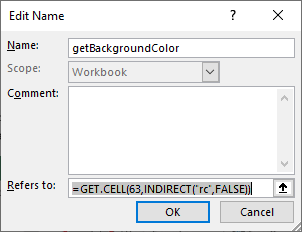
Now we can use this name within the cell formula:
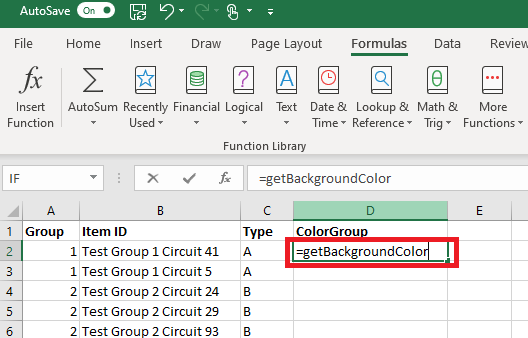
Select the rows for your first group and change the “fill color” of the row.
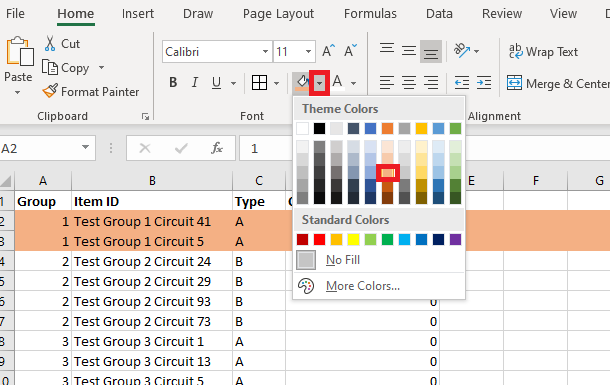
Repeat this process to colorize all of your groups – you can re-use a color as long as adjacent groups have different colors. Notice that the “ColorGroup” values do not change when you colorize your groups.
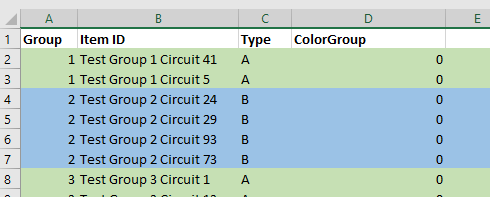
On the “Forumlas” tab, select “Calculate Now”

Now the colorized cells will have a non-zero value.
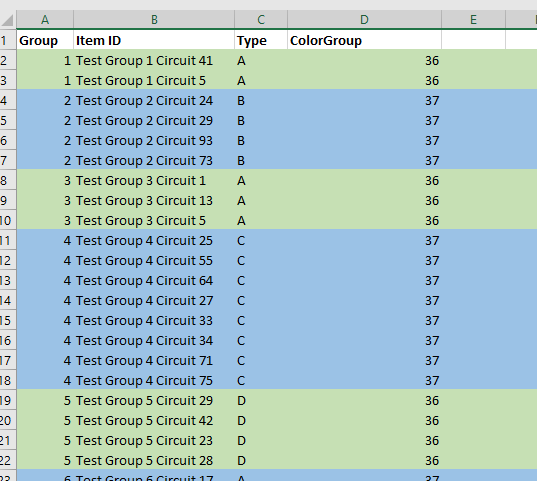
For some reason, the audio on Scott’s Fedora laptop falls over (maybe when coming out of sleep?) The playback device gets set to some ‘dummy’ device and he’s got no sound. Solution — from his user account, run:
systemctl --user restart pulseaudio.serviceI’m writing this down mostly to remember that I have built the latest flite instead of using the version from the Fedora repository.
git clone https://github.com/festvox/flite.git cd flite ./configure make
Voila, the compiled binaries for flite are in ./bi